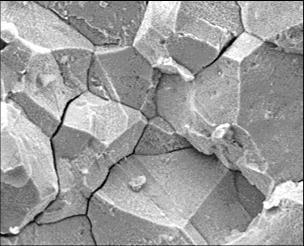Location of hydrogen near TiC precipitates in ferritic steel: a first-principles examination
Location of hydrogen near TiC precipitates in ferritic steel: a first-principles examination
Promotor(en): S. Cottenier, K. Verbeken /MM_14_MAT_04 / Solid-state physicsHigh strength steels are good candidates for many structural applications because they allow a significant weight reduction at the same strength or stiffness. However, there are numerous occasions, either in use or during production, when these materials come into contact with a hydrogen containing environment. Hydrogen changes the properties of many structural materials frequently leading to unexpected and unpredictable degradation and failure. This feature is called hydrogen embrittlement and high strength alloys are more prone to hydrogen embrittlement.

The phenomenon of hydrogen embrittlement; although described already a long time ago, is still not understood. Experimental, theoretical and computational research is being performed around the world to understand this better. One of the questions that need to be resolved is: where do the H-atoms preferentially go in the complex environment of a steel? To interstitial sites in the ferrite matrix? To vacancies or other point defects? To grain boundaries? To precipitates? And deep inside the precipitate or at the interface between precipitate and matrix?
In this thesis, you will use well-established quantum physics codes to examine H-uptake by TiC precipitates in ferritic steel. You will calculate how much energy it takes to bring an H-atom to any of the interstitial positions in the TiC precipitate. Then you will create a vacancy in TiC, and inspect how this changes the behavior of H. You will calculate the surface energy of TiC/ferrite interfaces, from which the preferential shape of a TiC precipitate can be derived. You will also calculate how much energy it costs to bring H to these interfaces. Taken together, this set of calculations will give you a global view on where H-atoms prefer to go in ferrite with point defects and TiC precipitates. You will be able to discuss this information with experimental researchers at UGent, who address the same problem with experimental methods and try to find correlations between the calculations and the experiments.
- Study programmeMaster of Science in Engineering Physics [EMPHYS], Master of Science in Physics and Astronomy [CMFYST], Master of Science in Sustainable Materials Engineering [EMMAEN]

